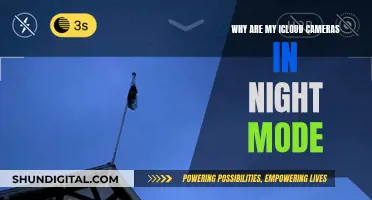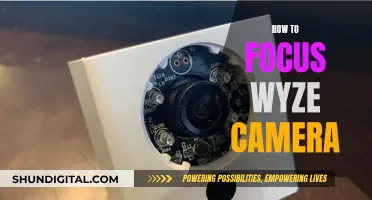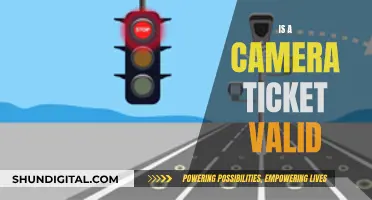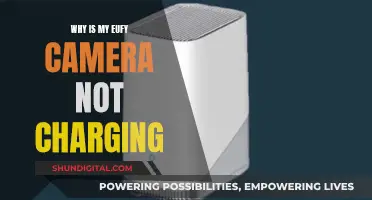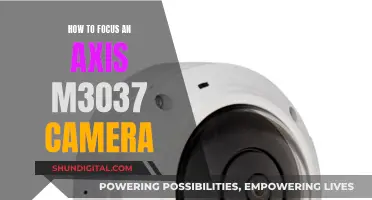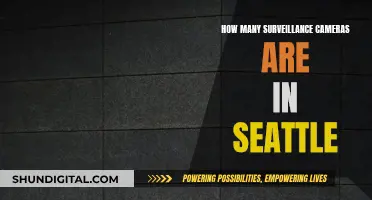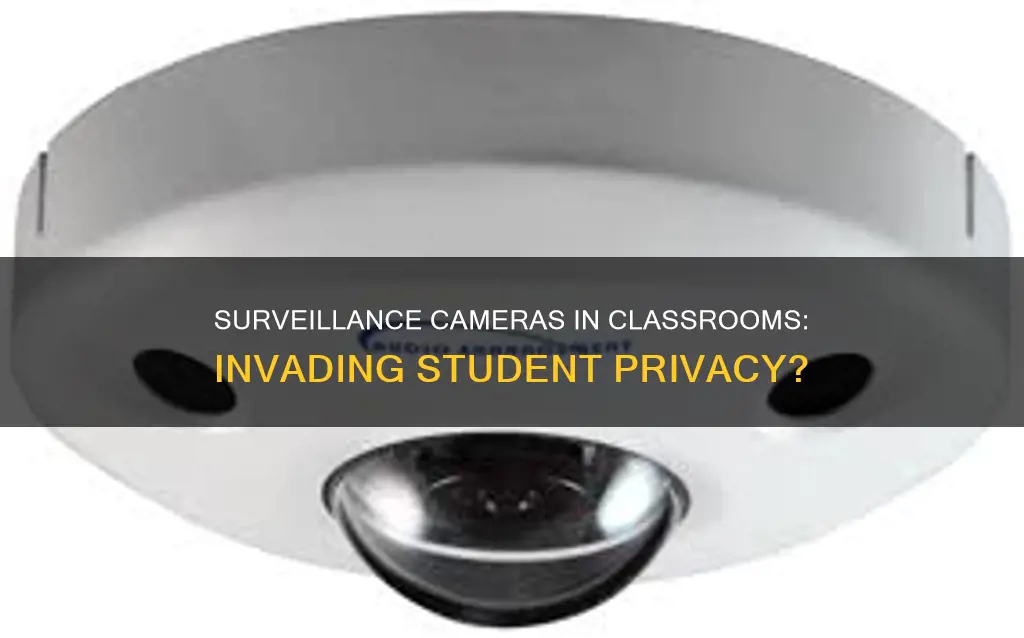
The use of surveillance cameras in schools is a highly debated topic. While some argue that it is an invasion of privacy, others believe that it is necessary for safety and security reasons. Schools have a responsibility to create a safe learning environment for students and staff, and with the rise in school shootings, cyberbullying, and other incidents, the question of whether or not to implement surveillance cameras has become even more pressing. Surveillance cameras can provide evidence in the event of an incident, aid in emergency response, and deter crimes such as theft and vandalism. However, there are also concerns about who has access to the footage and how it is used, as well as the financial burden of implementing and maintaining such systems. The decision to install surveillance cameras in classrooms is a complex one, and schools must carefully consider the benefits and drawbacks to make an informed choice.
| Characteristics | Values |
|---|---|
| Safety | Cameras can improve safety by acting as a deterrent to potential threats and helping to monitor the premises. |
| Emergency Preparedness | Video surveillance can provide real-time alerts and recorded video to aid in emergency response. |
| Bullying and Violence Prevention | Cameras can help detect and prevent bullying and violence, providing evidence for incident resolution. |
| Incident Resolution | Video footage can be used to resolve disputes, incidents of misconduct, or criminal activities. |
| Monitoring During School Hours and Beyond | Security cameras ensure continuous surveillance beyond traditional school hours, including after-school programs and sports events. |
| Crime Deterrence | The presence of cameras reduces the likelihood of theft, vandalism, and other crimes on school property. |
| Privacy Concerns | Surveillance in classrooms may violate the privacy of students and teachers, and improper use of video surveillance can lead to negative sentiments and concerns about privacy invasion. |
| Mistrust | The presence of cameras may create feelings of apprehension and resentment, as students and teachers feel like they are being spied on or not trusted. |
| Financial Considerations | The cost of implementing and maintaining a comprehensive security camera system can be prohibitive for many schools, especially those in underfunded districts. |
What You'll Learn

Pros and cons of surveillance cameras in classrooms
The use of surveillance cameras in schools is a highly debated topic, with valid arguments on both sides. Here are some of the pros and cons of installing surveillance cameras in classrooms:
Pros:
- Enhanced safety and security: Security cameras act as a visual deterrent to potential threats, including unauthorized visitors, theft, and vandalism. They also help monitor school entrances, parking lots, and perimeters, creating a safe environment for students and staff.
- Emergency preparedness: In emergency situations, video surveillance can provide crucial real-time information to aid in emergency response and ensure swift action is taken to mitigate risks.
- Bullying and violence prevention: Cameras installed in classrooms can help detect and prevent bullying and violence, ensuring student safety.
- Incident resolution: Video footage from security cameras can provide clear evidence to resolve disputes, incidents of misconduct, or criminal activities, aiding administrators and law enforcement in their investigations.
- Continuous monitoring: With activities extending beyond traditional school hours, such as after-school programs and sports events, security cameras ensure continuous surveillance, safeguarding students and faculty at all times.
- Visual verification: Surveillance systems offer visual verification of alarms or incidents, allowing for accurate assessments and appropriate action, improving situational awareness.
Cons:
- Privacy concerns: Installing surveillance cameras in classrooms can be seen as an invasion of privacy, especially in intimate learning environments. Many worry about who has access to the footage and how it is used.
- Mistrust and apprehension: Teachers and students may feel like they are constantly being watched and monitored, creating feelings of mistrust and apprehension.
- Financial burden: Implementing and maintaining a comprehensive security camera system can be costly, and finding the necessary budget may be challenging for many schools, especially those in underfunded districts.
- Inability to prevent active crime: While cameras can record incidents, they cannot physically prevent crimes from occurring. They are often part of a larger security strategy that includes security personnel and coordination with law enforcement.
- Legal complexities: The legality of classroom surveillance varies across states and countries. Schools must navigate complex laws and regulations regarding privacy, consent, and data storage to ensure their surveillance practices are compliant.
Street Camera Shopping: Tax Included?
You may want to see also

Privacy concerns
The use of surveillance cameras in schools has sparked a debate about the appropriate balance between student privacy rights and the need for school security. While some argue that video surveillance is crucial for campus safety and can deter crimes such as theft, vandalism, and gang violence, others view it as an invasion of privacy. Here are some privacy concerns related to the use of surveillance cameras in classrooms:
Legality and Privacy Concerns
The use of security cameras in schools is legal, but it must be done responsibly and in compliance with privacy laws. Some states have stricter laws regarding hidden surveillance cameras, requiring consent for their use. Schools should develop a video surveillance policy that respects “reasonable expectations of privacy” and clearly outlines the appropriate use of cameras, access to footage, and data retention policies.
Invasion of Privacy
Students, parents, and educators have expressed concerns about the invasion of privacy that surveillance cameras can pose. They argue that classrooms are spaces where privacy should be expected, and constant monitoring could make students and teachers feel uncomfortable and watched. This can create feelings of apprehension and mistrust, impacting the level of comfort and freedom in the learning environment.
Access to Footage
Excessive Monitoring
Surveillance cameras in classrooms can lead to excessive monitoring and potential misuse of information. For example, a school administrator used footage to reprimand a student for a dress code violation, which was not related to safety or security. This raises concerns about the appropriate use of surveillance footage and the potential for disciplinary actions based on minor infractions.
Alternative Solutions
Some educators and parents suggest that there are alternative ways to improve safety and address behavioral issues without resorting to surveillance cameras in classrooms. Motion sensors, vape sensors, and other technology can be used in certain areas while still respecting privacy. Additionally, educators can utilize strategies such as leveraging classroom objects to encourage honest behavior without the need for constant camera monitoring.
Galaxy S8 Camera Mode: Where Is It?
You may want to see also

Benefits of surveillance cameras
Improved safety and security
The primary benefit of installing surveillance cameras in schools is to enhance the safety and security of students, teachers, and staff. Cameras act as a visual deterrent to potential threats, including unauthorized visitors, theft, and vandalism. By monitoring entrances, exits, parking lots, and school perimeters, schools can maintain a safe environment for their students and staff. This is particularly important during after-school programs and sports events, ensuring continuous surveillance beyond traditional school hours.
Emergency preparedness and faster incident response
Surveillance cameras provide real-time alerts and recorded video footage, which are crucial in emergency situations. This enables schools to respond swiftly and effectively to incidents, potentially preventing escalation and ensuring the safety of students and staff. Modern security systems with AI capabilities can proactively detect suspicious behavior and send live alerts, further improving emergency preparedness.
Crime deterrence and prevention
The presence of security cameras significantly reduces the likelihood of crimes such as theft, vandalism, and car theft. When cameras are installed in plain sight, they serve as a visible deterrent, making potential criminals think twice before committing a crime. This helps create a safer environment for the entire school community.
Bullying and violence reduction
Strategically placed cameras in hallways, common areas, and school grounds play a crucial role in detecting and preventing bullying and violence among students. This ensures that student safety is upheld and creates a more positive and inclusive learning environment.
Incident resolution and evidence collection
Video footage from security cameras is invaluable for resolving disputes, investigating incidents of misconduct, and supporting criminal investigations. Clear visual evidence assists school administrators and law enforcement in their inquiries, leading to more effective resolution and legal processes.
Parental peace of mind
The presence of security cameras provides reassurance to parents, knowing that their children's safety is a top priority for the school. It demonstrates the school's commitment to conflict resolution, student safety, and addressing parental concerns promptly and satisfactorily.
Think Tank Camera Bags: Where Are They Manufactured?
You may want to see also

Who can access the footage?
The issue of who can access footage from surveillance cameras in schools is a complex one, with legal, ethical, and practical considerations.
Firstly, it is essential to respect the "reasonable expectations of privacy" of students, teachers, and staff. In the US, general video surveillance laws allow monitoring and recording in areas where there is no reasonable expectation of privacy. This means that privacy-sensitive areas such as restrooms, locker rooms, and, in some states, employee lounges, are off-limits for video surveillance.
State laws also vary, with some states requiring consent for the use of hidden cameras. For example, New Hampshire, Maine, Kansas, South Dakota, and Delaware mandate consent for any hidden camera use. Therefore, it is crucial to be aware of and comply with specific state regulations.
To address privacy concerns, schools should implement clear and transparent policies regarding video surveillance. This includes establishing guidelines on who can view the footage, under what circumstances, and the protocols for handling and storing the data. Access to footage should be restricted to authorised personnel only, such as school administrators, security teams, and, in some cases, law enforcement.
In the case of footage being used as evidence in criminal investigations or legal proceedings, access may be granted to law enforcement and legal representatives. However, this should be done in accordance with relevant data protection and privacy laws.
Some schools choose to give teachers control over the classroom cameras, allowing them to turn them on or off as needed. This can alleviate privacy concerns and give teachers a sense of agency.
Additionally, schools should consider the role of parents and guardians in accessing footage. While parental permission is generally not required for schools to record students for safety and educational purposes, some states, like Texas, require parental consent for recording students for promotional or non-educational purposes.
To summarise, access to surveillance footage in schools should be limited to authorised individuals with a legitimate need to view it. This may include school administrators, security staff, teachers, law enforcement, and, in certain cases, parents or legal guardians. Clear policies and guidelines should be established to ensure the privacy and security of all individuals involved.
Fighting Baltimore Camera Tickets: A Step-by-Step Guide
You may want to see also

Legality of surveillance cameras in classrooms
The legality of surveillance cameras in classrooms is a complex issue that varies depending on the state and local laws in the United States. While there are no federal laws specifically prohibiting the use of surveillance cameras in classrooms, several legal considerations come into play.
Firstly, it is important to respect individuals' "reasonable expectations of privacy." In general, video surveillance is permitted in areas where there is no reasonable expectation of privacy, such as hallways, cafeterias, and outdoor areas. On the other hand, installing surveillance cameras in areas where privacy is expected, such as restrooms, locker rooms, and changing areas, would be illegal. Some states also restrict or prohibit video surveillance in employee lounges and break rooms.
Secondly, the visibility of security cameras is a crucial factor. While not mandatory in all states, it is generally recommended to install cameras in locations where they are plainly visible. This not only helps to deter undesirable behavior but also ensures compliance with state laws, especially in states with stricter regulations regarding hidden cameras, such as New Hampshire, Maine, Kansas, South Dakota, and Delaware.
Thirdly, while parental permission is generally not required for schools to record students for safety and educational purposes, certain states, like Texas, may require parental consent if the recordings are intended for promotional materials or other purposes beyond safety and education. Schools should make parents aware of their surveillance policies and obtain signed consent forms when necessary.
Lastly, the use of audio recording in surveillance cameras is subject to federal laws, which forbid the recording of individuals without their consent. If security cameras are capable of audio recording, steps should be taken to ensure that audio capabilities are disabled or appropriate signage is displayed.
To ensure the lawful installation of surveillance cameras in classrooms, schools should be well-informed about the specific regulations in their state and carefully consider the legal and ethical implications. Striking a balance between enhancing security measures and respecting privacy rights is crucial for creating a positive and effective learning environment.
Uncover the Brand Behind Wall Charger Spy Cameras
You may want to see also
Frequently asked questions
Surveillance cameras in schools can enhance safety, improve emergency preparedness, prevent bullying and violence, facilitate incident resolution, and monitor activities during and after school hours. They act as a deterrent to potential threats and provide peace of mind to students, teachers, and parents.
Some people may see surveillance cameras as an invasion of privacy, especially in classrooms. There are also financial considerations, as the cost of installing and maintaining camera systems can be significant. Additionally, there may be concerns about who has access to the footage and how it is used.
Yes, the use of surveillance cameras in schools is subject to state and local guidelines, which vary across the US. In general, cameras are permitted in common areas but not in private spaces such as bathrooms and locker rooms. Schools should also consider notification requirements, access control measures, and retention policies for footage.
Common types of surveillance cameras used in schools include bullet cameras, dome cameras, and PTZ (pan, tilt, zoom) cameras. Bullet cameras are ideal for outdoor use due to their long, cylindrical shape and weather-resistant casing. Dome cameras are more discreet and suitable for indoor settings. PTZ cameras provide comprehensive coverage and are useful for large, open areas.
Schools can use the footage for incident resolution, to gather evidence in disputes or criminal activities, and to monitor activities during and after school hours. In some cases, footage can also be used for teacher training and development, allowing instructors to review and improve their teaching practices.


